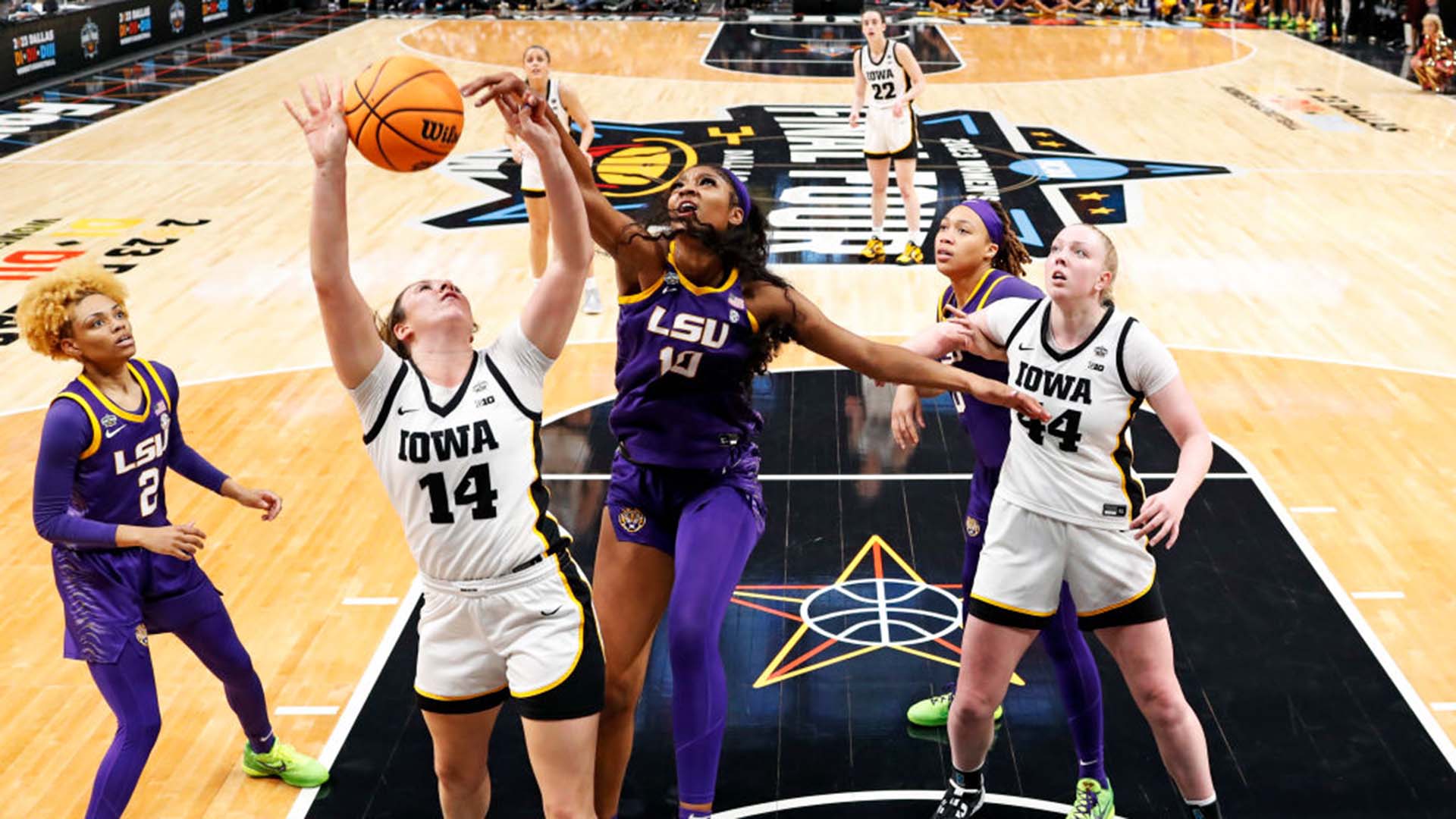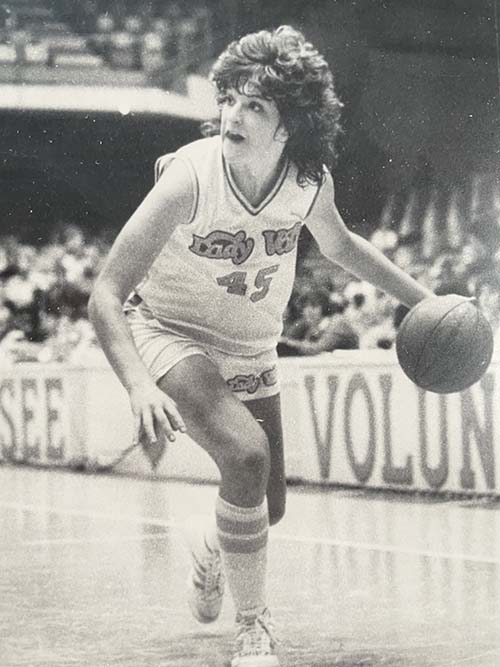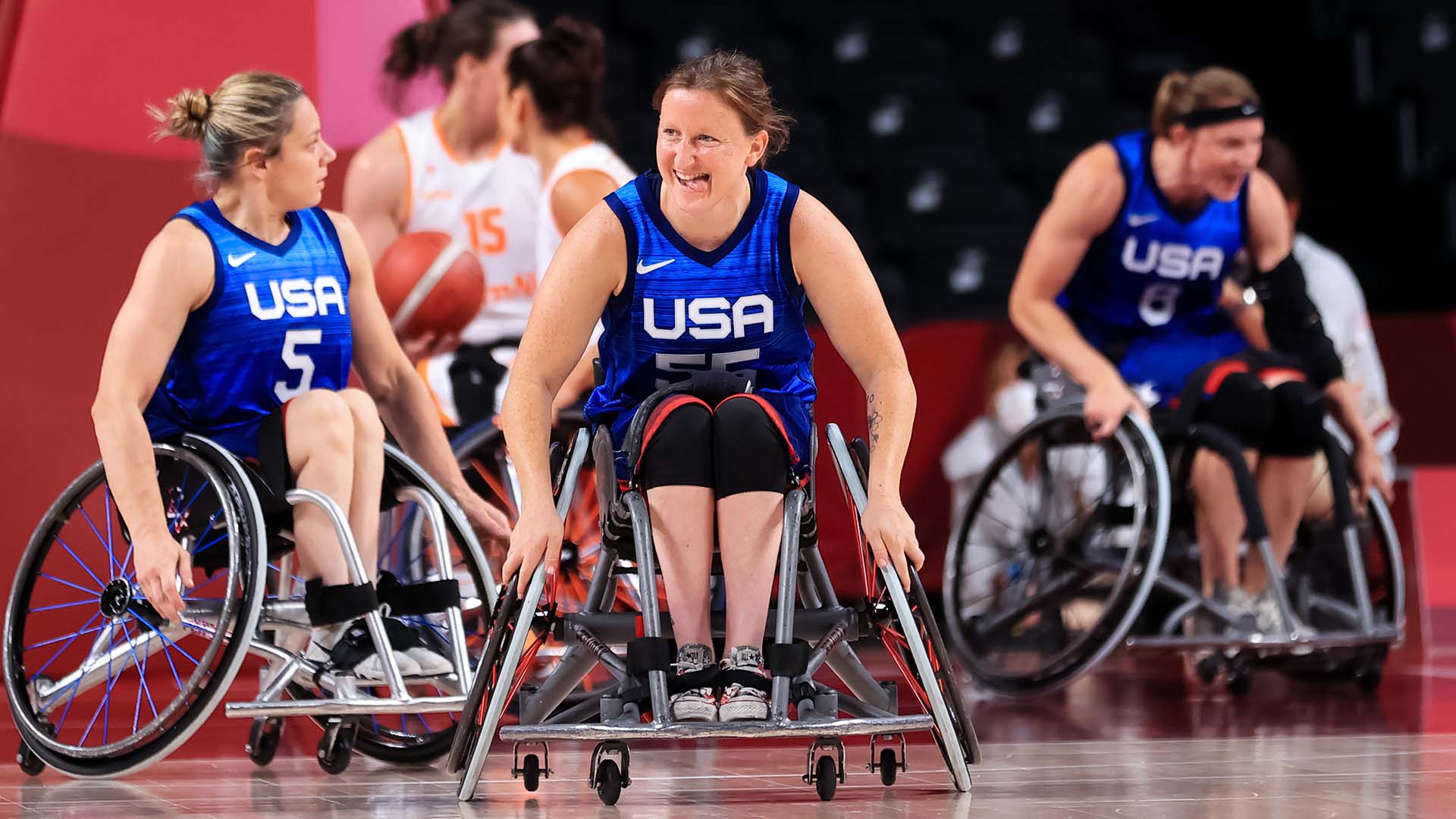How women’s basketball went from an afterthought to the main attraction
Legendary coach Tanya Haave explains the sport’s rapid rise in popularity and what’s next for fans and players.

Last year, the women’s NCAA championship game drew more viewers than the men’s title game, peaking at 24 million viewers.
That would have been unthinkable even a few years ago. But this surge in popularity is real — the bumper crowd sizes, inflated ticket prices and critical acclaim speak for themselves.
Tanya Haave, the winningest coach in the history of the Metropolitan State University of Denver Women’s Basketball program and who was a legendary player in her own right, walks us through the women’s players’ rise to prominence and what else they might yet achieve.
You’ve been involved in women’s basketball for a long time. Did you see this popularity coming?
Well, I’d always hoped that it would happen. And things had been getting slowly better from a crowd-size standpoint, but that was just pockets of localized activity across the country. I think the emergence of Caitlin Clark (at Iowa) and Angel Reese (LSU) was the real tipping point — they just exploded onto the national scene.
So while I’m not sure if anyone really expected this, I’m so glad that it did happen. And now, there’s no turning back. There are already other great players coming up who are just as good, if not potentially even better than the current stars.

What is it about the nature of the women’s game, compared with the men’s game, that has so captured the public’s imagination?
Because women generally aren’t as broad as men, there’s less power involved in their game, and it’s played below the rim. That leaves lots of open space on the court for complex offenses, greater displays of individual skill and more nuanced teamwork. There’s a kind of grassroots purity to the women’s game that I’d argue better captures the original intent of the game’s inventor, James Naismith.
Also, you can see that the men these days treat the game more like a business, whereas the women still seem to play for the joy of the game. That’s probably because, up until a very few years ago, women got no perks or endorsements or big contracts. They literally were playing for the joy of the game. And I think spectators and fans respond to that loose, positive energy.
More colleges across the country — such as South Carolina, Indiana, Iowa and Oregon — are successfully building programs with dedicated fan bases. Do you see that trend continuing?
I don’t see how you could stop it now — the floodgates have truly opened. Despite some great volleyball and softball leagues, basketball is still the No. 1 women’s sport in the country. And after this recent surge in popularity, organizations will continue pouring resources into the game and more fans will keep coming.
It’s strange — I had noticed a few years ago that the pool of female basketball players was starting to dwindle, but we’re about to see an eruption of talent coming down the pipeline. Think of all those young Caitlin, Angel and JuJu (Watkins) fans out on the courts right now, practicing their shots. The end result of this popular wave will be numerous stars of tomorrow.
RELATED: The novice’s guide to a successful March Madness
Just four years ago, there was a brief outrage when footage emerged of substandard workout amenities for women players during the NCAA Tournament. Why do such inequities persist between the men’s and women’s games?
Because men bring in the money. March Madness is a genuine cultural phenomenon that pretty much takes over this country for three weeks each year. And last year, the men’s basketball tournament generated almost a billion dollars for the NCAA, around 85% of its annual revenue.
So even though women’s basketball has been rising fast in popularity, the men’s game remains the real moneymaker. Consequently, the perception among teams, organizations and media outlets persists that it must therefore be more important.
Of course, this could start changing — and the fact that the women’s final got higher ratings than the men’s final last year suggests it already is, to some extent. But for now, it is very much the men’s tournament.
RELATED: 50 years of women in sports
You’ve been on the front line of women’s basketball for decades now. How much have things improved, really?
You see positive signs here and there. Women in the WNBA, for example, are now finally getting charter flights. And here at MSU Denver, all coaching staff for the men’s and women’s basketball teams get the same pay and benefits — there’s total parity across the board. That’s also starting to happen more with Division II teams across the country, I believe — but not yet among the more successful Division I teams, where maintaining gender parity would obviously cost more. When that happens, we’ll be making real progress.
What does the future look like for women’s basketball?
I see the WNBA moving up to 16 or even 18 teams within the next five years. I think you’ll see a deeper pool of new, promising players coming up through the ranks. There will be more teams vying for the NCAA Tournament, and the whole women’s game will be catching up to the men, in terms of excitement and on-court personalities. For me, personally, it’s so heartening to see all the hard work women players have put in for decades finally paying off. And I think it’s only going to get better from here.
Learn about Women’s Basketball at MSU Denver.






